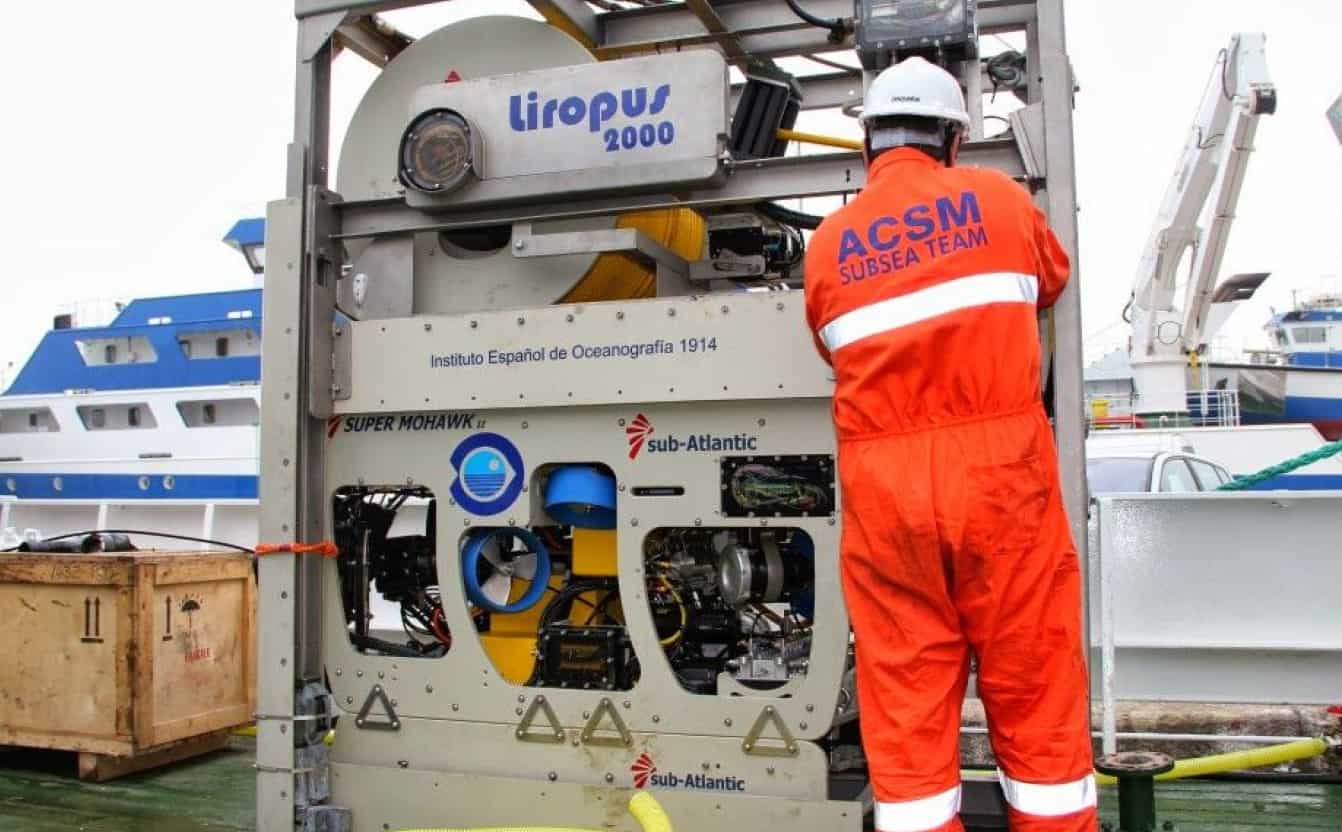Science & Research
ACSM supports the scientific and oceanographic research making its extensive knowledge of underwater vehicles, available to the international and local research institutes.
We have established long-term relationship with the Spanish Institute of Oceanography and, for many years, we have successfully completed marine campaigns involving the use of ROVs together with oceanographical instrumentation: such as Niskin bottles, ADCP, CTD, magnetometers, towed instruments, moorings, buoys and drifters, gliders, etc.

ACSM provides ROV support to scientific and oceanographic campaigns for:
- Archaeology
- Fisheries
- Subsea volcanos activities
- Biology and Environmental Studies
- Marine Zoology
- Physicochemical Investigations
Scientific applications
From the 2011 until the 2014, ACSM provided ROV support during several oceanographic campaigns conducted after the eruption of the ‘Tagoro’ submarine volcano offshore El Hierro Island, Canary Archipelago.
The campaigns permitted to collect samples of iron oxide deposits, as well as bacterial colonies and emissions of low-temperature fluid near the main crater.
ACSM had the full management and responsibility of the ROV SubAtlantic Liropus 2000, owned by the Spanish Institute of Oceanography.
The campaigns permitted to collect samples of iron oxide deposits, as well as bacterial colonies and emissions of low-temperature fluid near the main crater.
ACSM had the full management and responsibility of the ROV SubAtlantic Liropus 2000, owned by the Spanish Institute of Oceanography.
Archaeology applications
In the 2015, ACSM participated in the archaeological expedition to the wreck of the frigate “Nuestra Señora de Las Mercedes”.
The mission involved a multidisciplinary team from the National Museum of Underwater Archaeology ARQUA, from the Spanish Institute of Oceanography and from the Naval Museum of the Spanish Navy.
ACSM had the responsibility to operate the ROV SubAtlantic Liropus 2000 at more than 1.000 meters water depth.
The ROV was provided with ACSM titanium manipulator that allowed the vehicle to recover several important archaeological objects from the wreck.
The mission involved a multidisciplinary team from the National Museum of Underwater Archaeology ARQUA, from the Spanish Institute of Oceanography and from the Naval Museum of the Spanish Navy.
ACSM had the responsibility to operate the ROV SubAtlantic Liropus 2000 at more than 1.000 meters water depth.
The ROV was provided with ACSM titanium manipulator that allowed the vehicle to recover several important archaeological objects from the wreck.